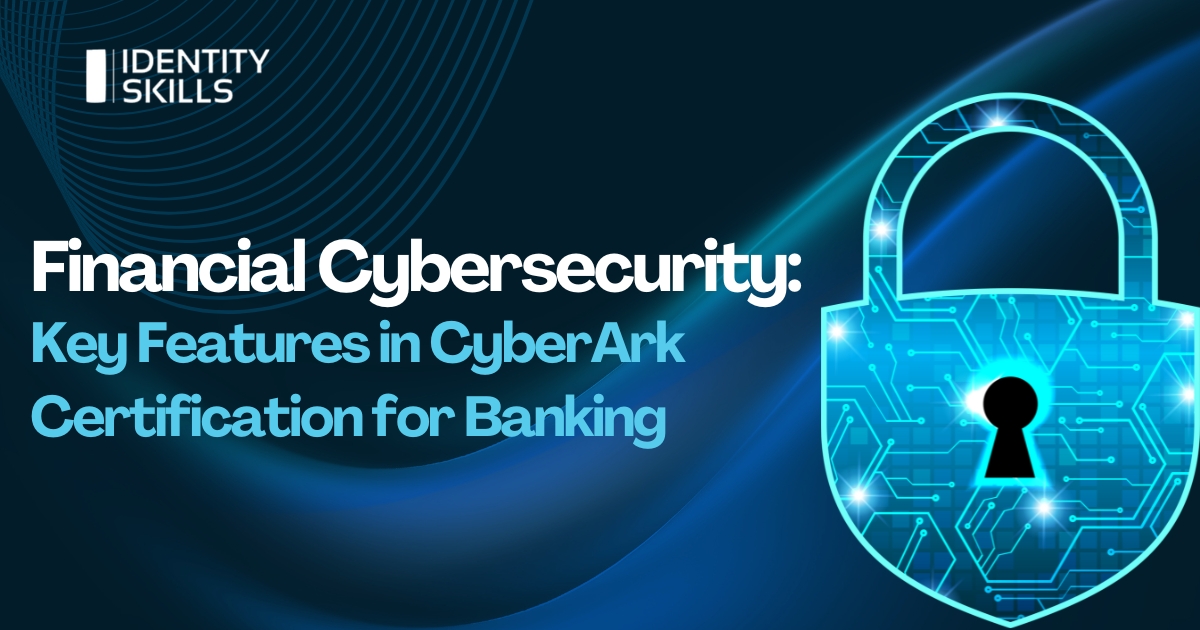Managing sensitive financial information is becoming increasingly dependent on technology. This shift has increased the risk of cyberattacks, making strong cybersecurity measures a top priority for financial institutions. One of the most effective solutions for safeguarding banking operations is CyberArk, a leading platform that focuses on securing access to critical systems and information.
The CyberArk certification program allows banking professionals to enhance security and protect sensitive data. Our blog explores the key benefits of certification and why strengthening the banking industry requires it.
1. Controlling Access to Critical Systems
Banks manage vast amounts of sensitive financial information, making it essential to control who can access critical systems. These certificates helps banking professionals understand how to manage these access points effectively. By learning how to restrict and monitor access, they can reduce the risk of unauthorized users gaining entry to sensitive systems, ensuring data remains secure.
This level of control is vital for preventing both internal and external threats. Employees or hackers with access to key systems pose significant risks, and equips professionals to mitigate these threats through robust access control strategies.
2. Securing Credentials and Passwords
The management of credentials is a cornerstone of any security strategy, especially in the banking industry. This kind of training teaches professionals how to store and handle credentials securely. It ensures that passwords are regularly updated, strong enough to resist attacks, and never stored in unsecured locations.
This knowledge is particularly valuable in the financial industry, where weak or compromised passwords can lead to significant security breaches. With CyberArk’s credential management tools, certified professionals can automate password rotation and enforce strict password policies, helping to safeguard sensitive banking information.
3. Monitoring User Activity
Keeping track of who is logging into sensitive systems and when is an essential aspect of banking cybersecurity. The Cyberark training provides tools that allow for real-time monitoring of user activity, offering visibility into what users are doing and whether their actions align with security policies.
Also trains banking professionals to configure and use these monitoring tools effectively, ensuring any suspicious activity is detected early. By recording user sessions, banks can also create a digital audit trail, making it easier to investigate any security incidents that occur.
4. Detecting and Responding to Threats
Banks are high-profile targets for cybercriminals, making it crucial to detect threats quickly and respond appropriately. As well as that, it is equipped with built-in tools to identify unusual behavior that may indicate a security breach. Whether it’s an insider threat or an external hacker, these tools alert administrators to take immediate action.
Certified professionals are trained in threat detection and incident response, enabling banks to act swiftly when a threat is detected. This proactive approach can prevent small issues from escalating into significant breaches, protecting the bank’s assets and reputation.
5. Ensuring Compliance with Regulations
Financial institutions operate under strict regulatory standards, including the Payment Card Industry Data Security Standard (PCI DSS) and various local and international banking laws. During this course, professionals learn how to adhere to these regulations while implementing security measures.
By aligning security strategies with regulatory requirements, banks can avoid fines, legal issues, and damage to their reputation. The tools also make it easier to maintain compliance by offering detailed reporting and auditing features that regulators often require.
6. Integrating with Existing Banking Infrastructure
Banks often use a mix of legacy systems and modern technologies, which can create challenges when implementing new cybersecurity solutions. CyberArk is designed to integrate seamlessly with various systems, whether they’re on-premise, cloud-based, or hybrid.
The trained professionals learn how to incorporate the platform into a bank’s existing infrastructure without causing disruptions. This allows banks to strengthen their cybersecurity posture without affecting day-to-day operations or requiring a complete overhaul of their IT systems.
7. Securing Remote Access
As remote work becomes more common in the banking industry, securing remote access to critical systems has become a top priority. Cyberark training in india provides secure solutions for managing remote access, ensuring that employees and third parties can connect to sensitive systems without compromising security.
Furthermore, it covers how to implement secure remote access protocols, protecting the bank from potential breaches that could occur when users access systems from outside the organization’s network. The importance of this is heightened because remote access can be a vulnerability if not properly protected.
Conclusion
The certification offers a range of benefits for banking professionals looking to strengthen their institution’s cybersecurity framework. From securing access to critical systems and protecting credentials to detecting threats and ensuring regulatory compliance, they equips professionals with the tools and knowledge needed to protect sensitive financial data.
In a rapidly evolving digital landscape, where cyber threats continue to grow more sophisticated, having certified CyberArk experts on board is essential for any financial institution. By investing in these services, banks can enhance their security strategies, protect their assets, and ensure the trust of their customers remains intact.

